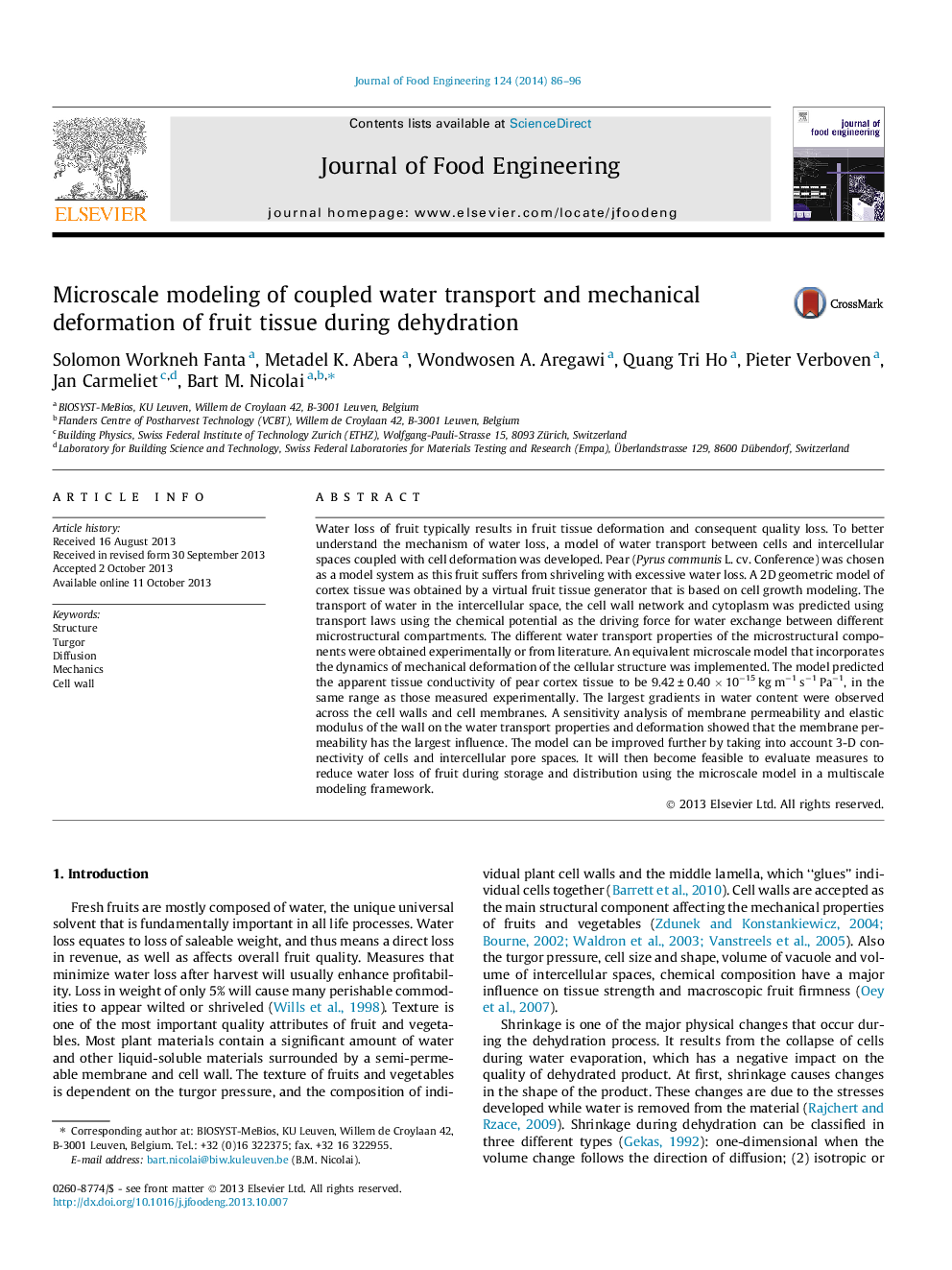| Article ID | Journal | Published Year | Pages | File Type |
|---|---|---|---|---|
| 223346 | Journal of Food Engineering | 2014 | 11 Pages |
•Apparent cortex tissue water conductivity of ‘Conference’ pear was calculated from simulation.•Simulations with different tissue structures has been done.•The model was validated based on the overall shrinkage of the sample.•The sensitivity with respect to the membrane permeability and elastic modulus of the cellwall was calculated.
Water loss of fruit typically results in fruit tissue deformation and consequent quality loss. To better understand the mechanism of water loss, a model of water transport between cells and intercellular spaces coupled with cell deformation was developed. Pear (Pyrus communis L. cv. Conference) was chosen as a model system as this fruit suffers from shriveling with excessive water loss. A 2D geometric model of cortex tissue was obtained by a virtual fruit tissue generator that is based on cell growth modeling. The transport of water in the intercellular space, the cell wall network and cytoplasm was predicted using transport laws using the chemical potential as the driving force for water exchange between different microstructural compartments. The different water transport properties of the microstructural components were obtained experimentally or from literature. An equivalent microscale model that incorporates the dynamics of mechanical deformation of the cellular structure was implemented. The model predicted the apparent tissue conductivity of pear cortex tissue to be 9.42 ± 0.40 × 10−15 kg m−1 s−1 Pa−1, in the same range as those measured experimentally. The largest gradients in water content were observed across the cell walls and cell membranes. A sensitivity analysis of membrane permeability and elastic modulus of the wall on the water transport properties and deformation showed that the membrane permeability has the largest influence. The model can be improved further by taking into account 3-D connectivity of cells and intercellular pore spaces. It will then become feasible to evaluate measures to reduce water loss of fruit during storage and distribution using the microscale model in a multiscale modeling framework.
